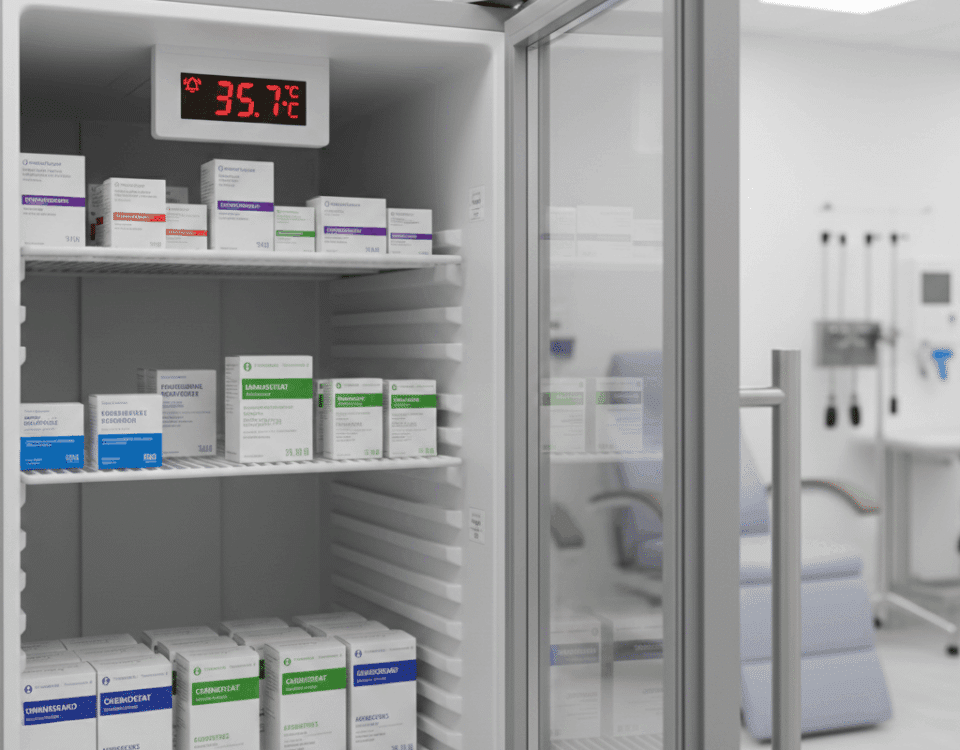It’s Open Enrollment season!
Open Enrollment is the annual period when patients review and adjust their health insurance coverage. For patients receiving infusion therapies, insurance choices can significantly impact their ability to continue accessing treatment.
As a provider, you play an important role in informing patients about their options, which will help them avoid gaps in coverage, delays in treatment, or unexpected costs.
This guide is designed to help you:
- Understand key differences between Medicare and Marketplace/commercial plans
- Explain insurance terms clearly in conversations with patients
- Illustrate how deductibles, co-pays, and co-insurance affect overall costs
- Provide important enrollment dates and reminders
Types of Health Insurance with Open Enrollment
Medicare (Government Insurance)
Medicare is a government-funded program that offers healthcare coverage for people who are age 65 or older, disabled, or have end-stage renal disease (ESRD) or ALS (also called Lou Gehrig’s disease). Infusion therapies are most often billed under Medicare Part B (more on the different components of Medicare below).
Marketplace Plans
The Affordable Care Act (ACA) created a competitive market for individual insurance known as the federal Health Insurance Marketplace, or HealthCare.gov. Individuals and families can get coverage during Open Enrollment through the ACA marketplace or through state-run marketplaces. Patients can also work with a broker or health insurance company directly or buy a plan from a private exchange.
Key Terms Patients Should Know
- Premium: The monthly cost of maintaining insurance coverage.
- Deductible: What the patient must pay each year before insurance begins to share costs for certain services based on the plan benefits.
- Co-insurance: A percentage of the allowed amount for a service that the patient pays after meeting the deductible (e.g., 20%). The “allowed amount” is the maximum amount an insurance company has agreed to pay for a covered health care service.
- Co-pay: A flat fee for certain visits or medications.
- Out-of-pocket maximum: The most a patient will pay for covered services in a year. After reaching this, insurance pays 100%.
- Formulary: The list of medicines covered by the plan. This is critical for infusion and specialty drugs.
- Prior authorization: Approval required by the plan before a medicine or treatment is covered.
- In-network vs. out-of-network providers: Staying in-network usually results in lower costs.
- Treatment administration fee: Charges for administering infusion therapies in a clinic, office, or hospital.
- Patient assistance programs: Manufacturer-provided discounts or copay assistance — note that not all plans count these toward a deductible or out-of-pocket maximum.
Infusion patients should always check:
- Is your infusion medicine on the formulary?
- Does the plan require prior authorization for your treatment?
- Are your infusion providers in-network?
- What are you responsible for paying for your treatment? Is it a percentage of the cost of service (coinsurance) or a flat fee (copay)?
How Health Insurance Coverage Works
Here’s a simplified example:
Plan: $2,000 deductible, 20% co-insurance, $6,000 out-of-pocket maximum
Medical expense: $22,000 infusion treatment
- Patient pays the $2,000 deductible
- Then pays 20% of remaining $20,000 = $4,000
- Total patient responsibility = $6,000 (reaching out-of-pocket max)
- Insurance pays the rest = $16,000
This example is useful to show patients how large infusion costs can quickly push them to their out-of-pocket maximum.
Balancing Premiums and Deductibles
Patients could ask whether it’s better to choose a high-premium plan or a low-premium plan. Key points to share:
- Higher premium / lower deductible
- More expensive monthly payment
- Could save money for patients with frequent infusion needs in the long run, since insurance likely starts covering sooner
- Tend to have lower out-of-pocket maximums and patient cost share
- Lower premium / higher deductible
- Less expensive monthly payment
- Could cost more overall if the patient requires ongoing or high-cost treatments
- Tend to have higher out-of-pocket maximums and could have higher patient cost share once the deductible is met (e.g., 20% coinsurance vs. a $50 copay)
Medicare: What Infusion Patients Need to Know
Typically, infusion patients choose between two paths:
1. Original Medicare (Parts A & B)
- Part A: Hospital care
- Part B: Outpatient services, including infusion treatments in a doctor’s office or clinic
- Optional add-ons:
- Medigap: Supplemental insurance to cover co-pays, co-insurance, and Part A deductibles
- Part D: Helps cover medicines taken at home
- Original Medicare does not cover:
- Routine dental care
- Most hearing services
- Eye exams and eyeglasses
- Long-term care
- Care while traveling outside the U.S.
2. Medicare Advantage (Part C)
- Combines Parts A and B in one plan (usually includes Part D)
- Run by private insurance companies
- Could include “extras” like vision, dental, or hearing that Original Medicare Parts A & B do not (while charging higher premiums)
- Cannot be combined with Medigap
- Required to have an out-of-pocket maximum
Medicare: Important Differences for Infusion Patients
| Question | Original Medicare (Parts A & B) | Medicare Advantage (Part C) |
| Can I see my doctor? | Any provider who accepts Medicare (99% of clinicians) | Limited to in-network providers; fewer choices |
| Are infusions covered? | Yes, under Part B; usually no pre-approvals | Often require pre-approvals, which could delay treatment |
| Out-of-pocket costs? | Premiums: Part A: $0 for most Part B: Standard Part B premium ($185 in 2025, 2026 TBD)Deductible: Fixed for Part A and Part BAnnual cost limit: No limit, unless a patient has Medigap (which could bring Part B costs down to $0) | Premiums: Vary by plan. Part C premium is in addition to any required premiums for Part A and Part BDeductibles: Vary by plan Annual cost limit: Limit varies by plan. Medigap is NOT available under Medicare Advantage coverage |
| Flexibility? | Can add Medigap and Part D | Locked into network and plan rules. Most plans include prescription drug coverage, but patients can purchase a separate Part D plan if their plan does not. |
IMPORTANT NOTE: If a patient switches from Medicare Advantage back to Original Medicare and wants to add Medigap, they could have to go through medical underwriting in most states. This means the insurer can look at their health condition(s) and charge more or deny coverage.
Important Dates for Open Enrollment
Marketplace
- Through an employer or private broker: Dates vary depending on employer or plan.
- Health Insurance Marketplace (Healthcare.gov):
- Nov 1 – Jan 15, 2026 – Open Enrollment period to review, enroll, or change plans.
- Dec 15, 2025 – Last day to enroll or make changes for coverage starting January 1, 2026.
- Note: Some states run their own marketplaces with different dates. Visit CMS.gov and search “State-Based Marketplaces 2026 Open Enrollment” to find state’s deadlines.
Medicare
- General Open Enrollment:Oct 15 – Dec 7, 2025
During this period, patients can:- Choose Original Medicare (Part A and Part B) and possibly add Medigap
- Choose or change a Medicare Advantage (Part C) plan
- Choose or change a Part D prescription drug plan
- Medicare Advantage / Part C Open Enrollment:Jan 1 – Mar 31, 2026
During this period, patients can:- Switch to a different Part C plan
- Switch from Medicare Advantage to Original Medicare, and possibly add Medigap (with potential medical underwriting)
- Add a Part D plan
Considerations to Communicate to Patients in Choosing an Open Enrollment Plan
1. Review health needs
Encourage patients to start by evaluating their personal and family health needs:
- How often do they visit doctors or specialists?
- Do they have ongoing medical conditions requiring frequent or high-cost care?
- What prescriptions are necessary, especially infusion or specialty medicines?
- How often are infusions scheduled, and where are they administered?
2. Gather necessary information before applying
Patients should be prepared with:
- Personal details (name, date of birth, ZIP code, Social Security numbers for household members)
- Proof of income (W-2 forms, pay stubs, or tax returns) — needed for subsidy eligibility
- Current health insurance details (if they have coverage already)
- Preferred providers, specialists, and infusion centers, so they can confirm network participation
- A list of their regular prescriptions and infusion medicines
3. Check providers
Stress to patients that provider networks can directly impact their care and costs:
- Confirm their primary care physician, specialists, and infusion center are in-network
- Explain that out-of-network visits could result in significantly higher costs or uncovered services
- Remind patients that Medicare Advantage plans have narrower networks than Original Medicare, which could limit access to their established infusion site
4. Check medicines
Infusion patients need to ensure their treatments are included on the plan’s formulary. They should:
- Verify that each infusion medication is covered under the plan
- Ask whether prior authorizations are required, as these can delay therapy
- Check approval timelines, as some Marketplace or Medicare Advantage plans require new approvals each year even if the patient has been stable on therapy
5. Compare costs (not just premiums)
Patients often focus only on the monthly premium, but total cost of care includes:
- Deductibles: How much they must pay out-of-pocket before coverage begins
- Co-pays and co-insurance: What they’ll pay at each visit or per infusion
- Out-of-pocket maximum: The maximum financial responsibility in a year
- Infusion-related fees: Such as drug administration charges or facility costs
Sometimes, a higher premium / lower deductible plan could save money overall, since infusions can quickly push them to their deductible or out-of-pocket maximum.
6. Understand Marketplace “metal tiers”
If patients are considering Marketplace plans, explain the four levels:
- Bronze: Lowest premium, highest out-of-pocket costs
- Silver: Moderate premiums, moderate out-of-pocket costs (subsidy-eligible)
- Gold: Higher premiums, lower out-of-pocket costs
- Platinum: Highest premiums, lowest out-of-pocket costs
For infusion patients, higher-tier plans could be more cost-effective long-term, since they reduce per-treatment expenses.
7. Look into assistance programs
Some drug manufacturers offer copay or patient assistance programs for infusion medicines. Patients should:
- Verify whether the insurance plan will apply these payments toward the deductible or out-of-pocket maximum
- Note that not all states require insurers to count manufacturer assistance, so patients could reach their maximum more slowly than expected
8. Check eligibility for subsidies
Patients purchasing Marketplace plans could qualify for premium tax credits or cost-sharing reductions if their income meets federal guidelines. These subsidies can significantly reduce monthly premiums and overall costs. However, as of this writing, the enhanced tax credits are set to expire after 2025, meaning 2026 Marketplace coverage could be more expensive.
9. Mark important deadlines
Missing deadlines could leave patients without coverage for the year. Remind them of:
- Medicare General Enrollment: Oct 15 – Dec 7, 2025
- Medicare Advantage Open Enrollment: Jan 1 – Mar 31, 2026
- Marketplace Open Enrollment: Nov 1, 2025 – Jan 15, 2026 (Dec 15 for Jan 1 coverage)
- State-specific marketplace dates (refer them to CMS.gov if needed)
10. Understand Special Enrollment Periods (SEPs)
If patients miss Open Enrollment, they could still qualify for coverage changes due to:
- Loss of health coverage
- Offer of new health benefits
- Change in household (marriage, divorce, birth, adoption, death)
- Change in residence
After Enrollment
Once a patient has chosen their plan, remind them to:
- Keep copies of enrollment forms and insurance cards
- Confirm that infusion treatments and providers are covered
- Set a reminder for next year’s Open Enrollment
- Revisit plan every year, as needs or finances can change
Conclusion
Choosing health insurance can feel overwhelming for patients, especially those who rely on infusion treatments. But by checking coverage for medicines, confirming providers, and comparing real costs, patients can choose a plan that protects both their health and their budget in 2026.





